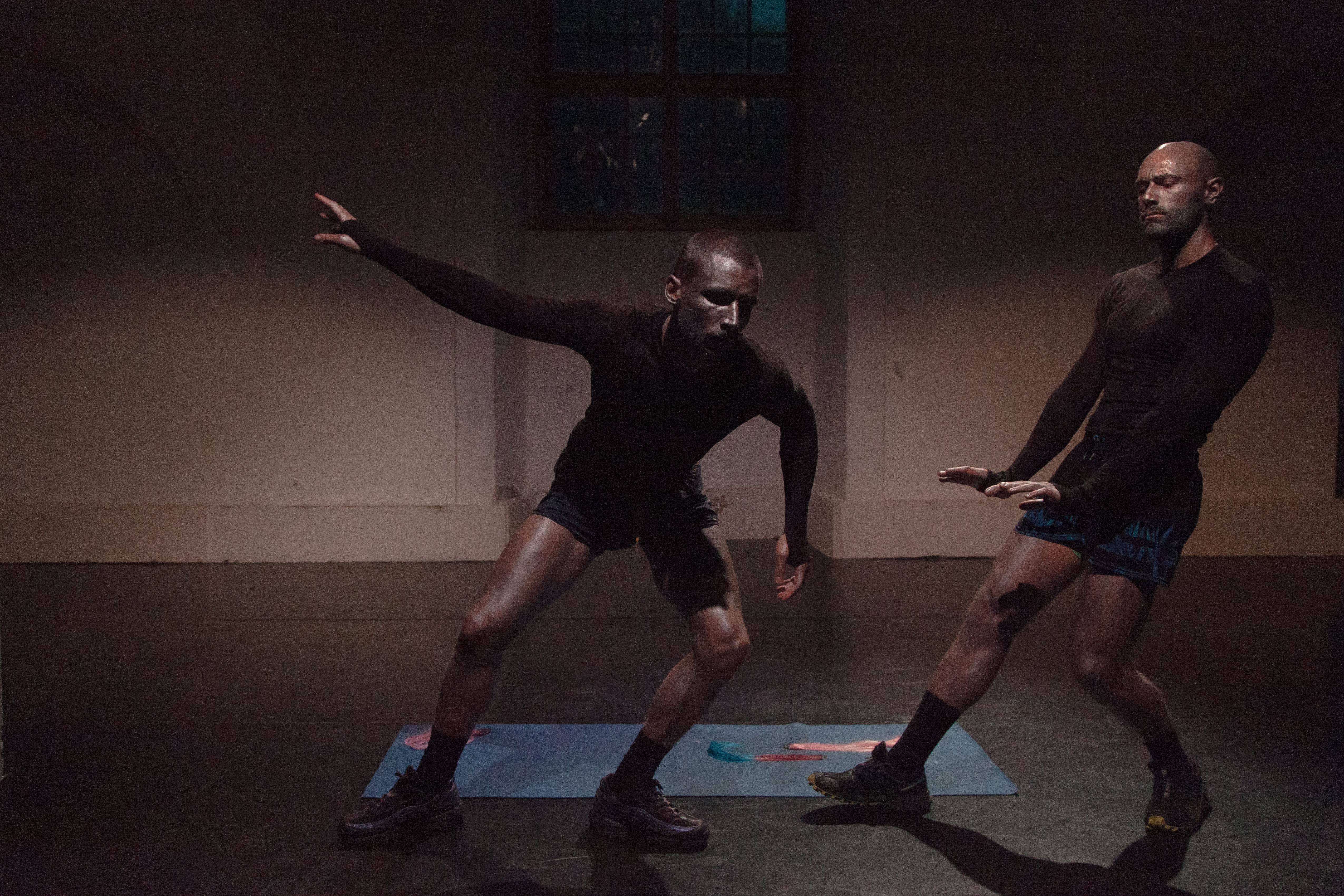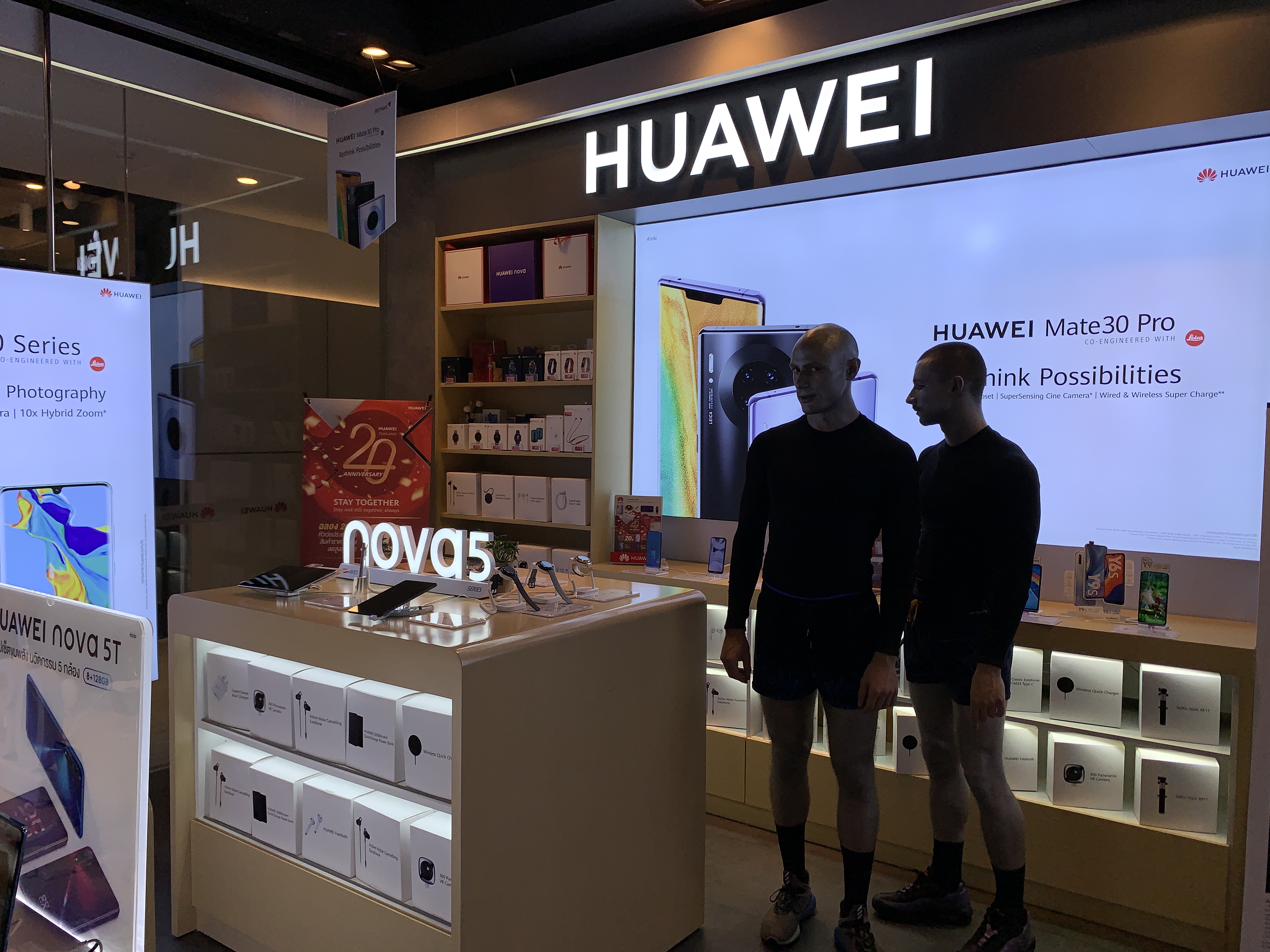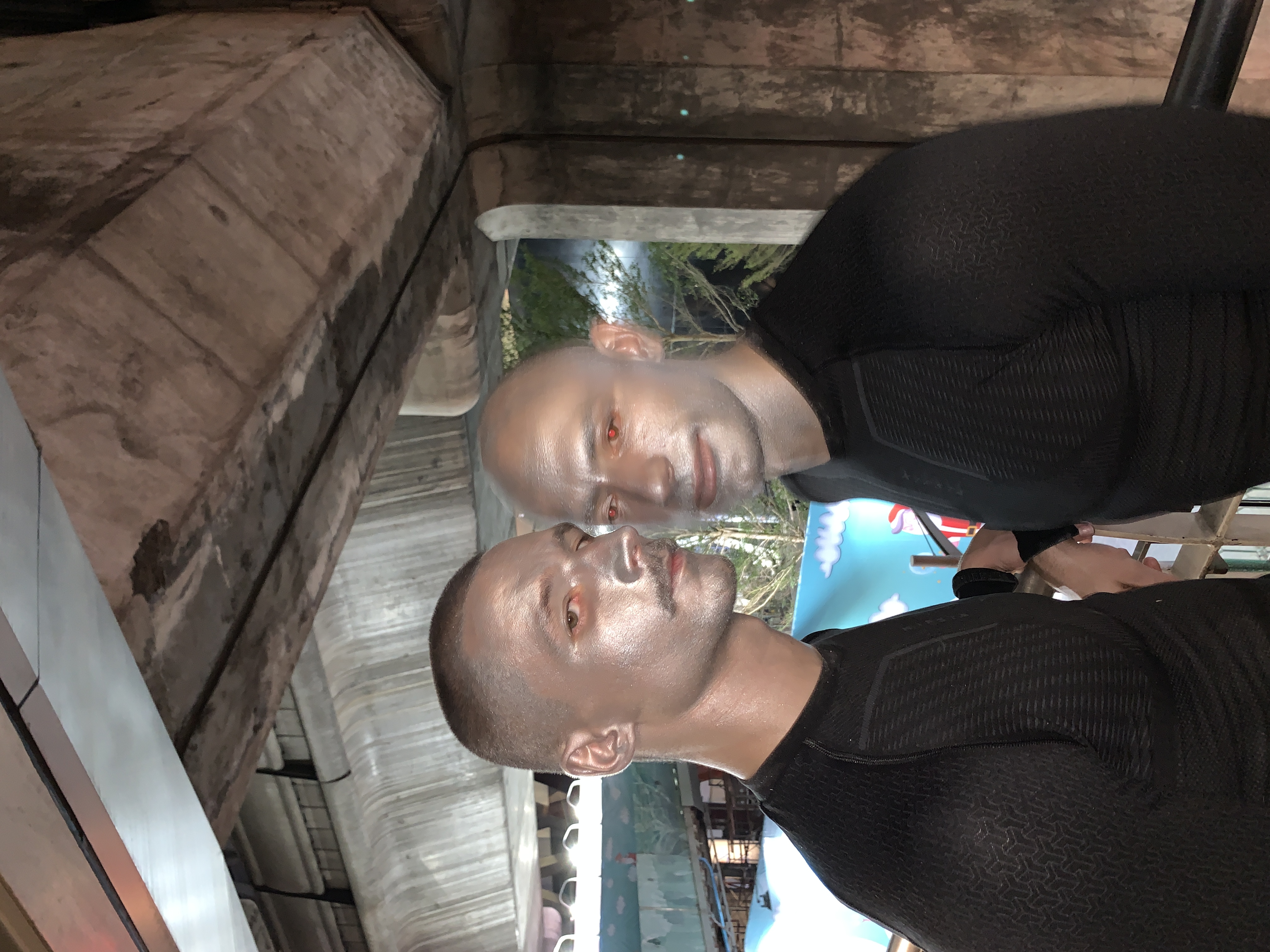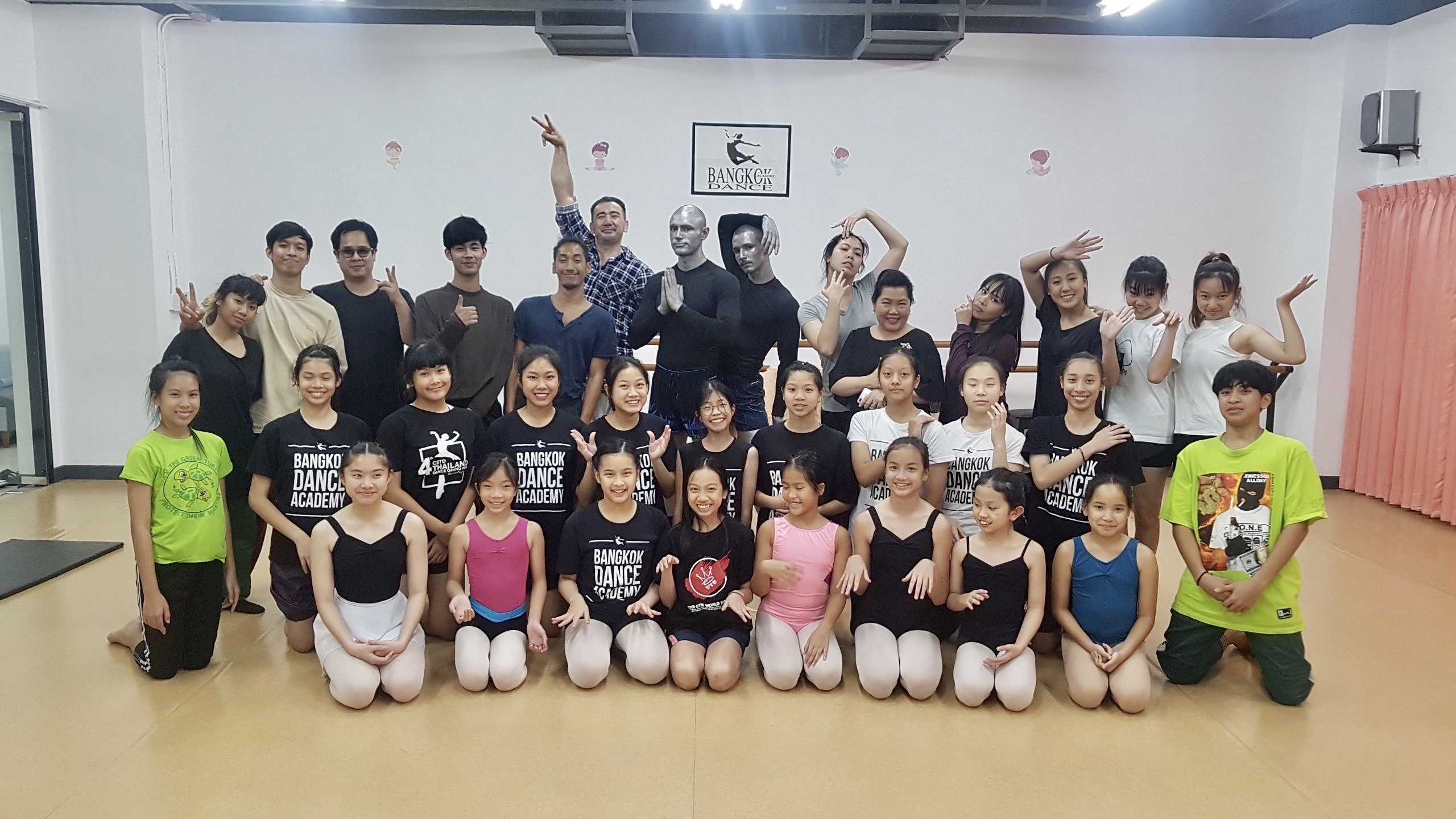Alien Intimacy, 2019
︎︎︎
collaboration James Batchelor
Supracolor metallic, two green yoga mats, yellow iPhone, Nintendo 3DS, game engine-rendered outer-space

Zander Porter and James Batchelor, in duet fashion, perform an interrelation in Alien Intimacy. The performance speculates on the movement of an interpersonally constructed alien sensibility where the visible and the invisible or the physically embodied and the virtually disembodied intertwine. The distance between human and alien (or body/self and object/other) expands and contracts as the performers locate themselves in a nearby, inter-netted spacetime when “alien” recalls and navigates away from imageries more essentialized, such as the cinematic extraterrestrial. A speculative choreography proposes new landscapes from console gaming scenography and low-res NASA images. Remembered as a microscopic gravitational force and a magnetic repulsion over the illusory notion of a direct contact, “touch” is macroscopically proportioned in Alien Intimacy, giving over to new senses of (non)touch-touch, the “almost-touchable,” or a “space-in-between.”
The performance premiered as part of Art, Not Apart at the National Film and Sound Archive of Australia (Canberra).(Documentation images © Martin Ollman [NFSA], Nick Hynan [Fierce Festival, Birmingham], Charlotte de Bekker [DeZIM-Institut, Berlin], and Darja Lukjanenko [Studio ALTA, Prague].) Alien Intimacy was researched further in residency in 2020 at Cité internationale des arts (Paris) and re-premiered in video form for Dancehouse at Melbourne Fringe 2020 (with additional support from Broadtree Foundation and bbk berlin), where it was awarded the Up! People’s Choice Award. Additional performances or screenings have occurred at 289E (Ho Chi Minh City), Bangkok Dance Academy (Bangkok), Internationales Digitalkunst Festival (Stuttgart), LCB Depot (Leicester), and others.
“For the fourth and final conversation of Revis(ualis)ing Intersectionality, we will probe intimacy as an unfolding form of oppression and/or togetherness with the increased inclusion of digital technologies in our daily experiences. Digital technologies promote hypervisuality of our bodies which shapes our relations. Where we might mutually recognize a shared togetherness within the digital sphere, we might also discover a feeling of alienation, or even seduction. We are intimate with algorithms themselves too: with targeted ads, bots, or Alexa. We are the seductive objects that attract and train these algorithms. Some questions we [with Shaka McGlotten, Zander Porter, and James Batchelor] might ask are: How does the growing implementation of digital technologies in our daily lives, and the inescapability therein, shape our encounter(s) with intimacy? How does virtual or digital intimacy fabricate how the body, our bodies, are displayed visually? Does mutuality as a form of intimacy within the digital plasticize and build into something else, or does it refuse intimacy and force us to ask what intimacy actually is anymore?”
— Tiara Roxanne, PhD, coauthor of Revisualising Intersectionality
“Alien Intimacy is an exploration of the ‘distance between the physical self and digital or alien other’ which employs a myriad of motifs and post-cinematic aesthetic conventions to engender and exemplify the ‘post-human sensorium’ that is created by the extension of the physical self into the digital self and the inherent and paradoxical distance between those two selves. Here, the artists employ the conventions of the post-cinematic to engender an exemplification and personification of the post-human sensorium. Alien Intimacy at once collapses space and time, with no clear narrative or set location, flitting between digitally rendered spaces and video footage, spliced, intercut, and juxtaposed by overlaid footage of the two artists writhing, posing, dancing, and kissing. The effect is disorienting and largely nonsensical, evoking a sense of the uncanny through a myriad of implied gestures and motifs, creating affect that feels loosely disjointed, as if there were an incongruence between what the body feels and what the eye perceives. [...] At once, Alien Intimacy riffs on the physical imitation of the digital self imitating the physical self. The piece recalls the strangeness of the uncanny valley, imbuing the physical with a sense of the digital and vice versa, creating a simulacrum wherein ‘empty signs refer to themselves and where meaning and value are absent.’ In short, Alien Intimacy both embodies and engenders the affect of a ‘post-human’ sensorium, therein embodying a critique of digital culture that emanates from and dwells within the very space it seeks to assess.”
— Cody Rooney, PhD, contributor to Imagining Futures of Experimental Media
















»Desktop
